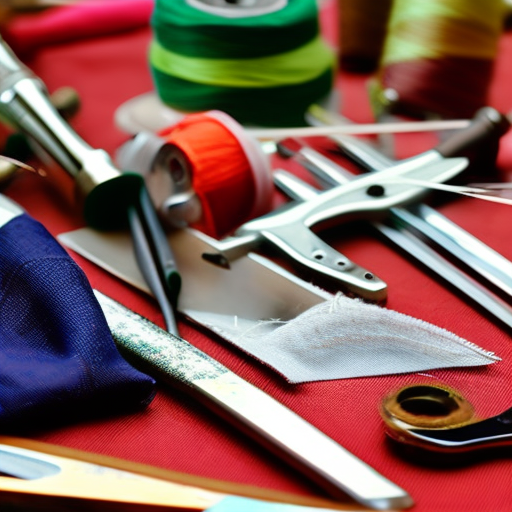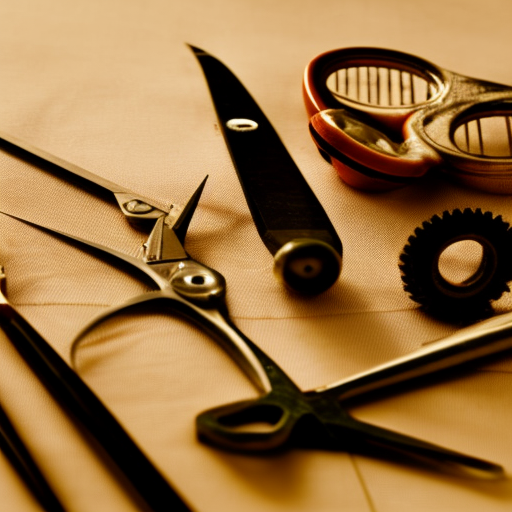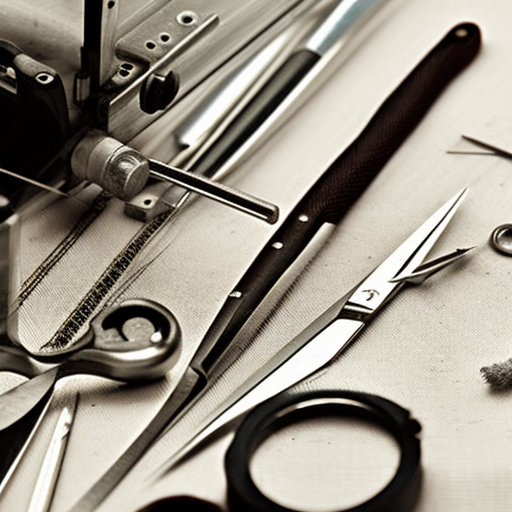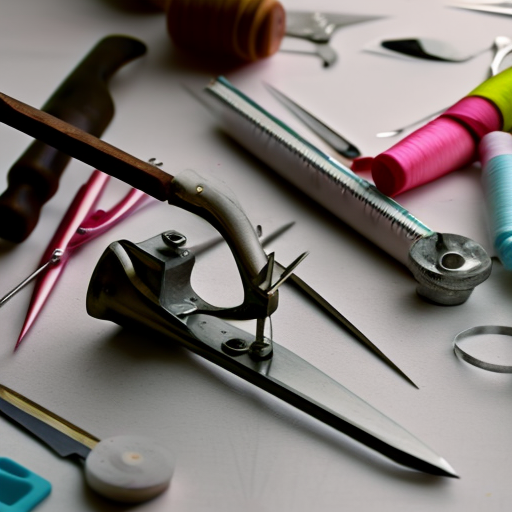Sewing Tools: Understanding the Different Types of Thread
As a sewing enthusiast, you know that having the right tools is crucial for creating quality and long-lasting projects. One of the most important tools in your sewing kit is thread. While it may seem like a simple and mundane item, thread plays a significant role in the outcome of your sewing project.
In this article, we will dive deeper into the world of sewing thread and explore the different types available, their uses, and how to choose the best one for your project. So, let’s thread our way through the different options and find out what makes them unique.
Cotton Thread
Cotton thread is one of the most commonly used types of thread. It is made from cotton fibers and is known for its strength, durability, and versatility. Cotton thread is widely used for general sewing, like piecing fabric together, hand sewing, and for sewing buttons and zippers.
One of the benefits of cotton thread is that it is heat resistant and can withstand the highest iron settings without melting or breaking. It is also available in a variety of colors, making it an excellent choice for visible stitching or decorative purposes.
Polyester Thread
Polyester thread is another popular option for sewing projects. It is made of synthetic polyester fibers, making it incredibly strong and resistant to breaking. Polyester thread is widely used for sewing heavy or thick fabrics, such as denim, leather, or canvas. It is also suitable for sewing buttons, zippers, hems, and decorative stitches.
One of the advantages of polyester thread is that it is less likely to shrink or stretch, making it an ideal choice for long-lasting projects. It also comes in a wide range of colors, making it perfect for matching your fabric or creating colorful designs.
Silk Thread
Silk thread is a luxurious option for sewing projects. It is made from natural silk fibers, giving it a soft and smooth texture. Silk thread is often used for delicate fabrics, such as silk, satin, and chiffon. The thread’s fine and delicate nature makes it ideal for hand-sewing, embroidery, and quilting.
One of the benefits of silk thread is that it creates a fine and nearly invisible seam, making it perfect for delicate fabrics that require a clean finish. It also comes in a limited range of colors, but they are highly vibrant and luxurious.
Nylon Thread
Nylon thread is a synthetic thread made from nylon fibers. It is extremely strong and resilient, making it suitable for sewing heavy-duty materials, such as leather, canvas, and upholstery fabrics. Nylon thread is also commonly used for hand-sewing leather goods, like bags, shoes, and belts.
One of the advantages of nylon thread is its ability to stretch, making it less likely to break under tension. It is also highly resistant to chemicals, making it a suitable option for outdoor and marine projects.
Invisible Thread
As the name suggests, invisible thread is an almost transparent thread. It is made of nylon monofilament, making it incredibly strong and nearly invisible to the eye. Invisible thread is most commonly used for hemming, blind stitching, and attaching appliques or trims.
One of the benefits of invisible thread is that it does not detract from the fabric’s appearance, giving the illusion that your project is stitched seamlessly. However, it is not suitable for heavy-duty projects as it is more delicate and can easily break under tension.
Choosing the Right Thread
Now that we have explored the different types of thread let’s talk about how to choose the right one for your project. Firstly, consider the fabric you will be sewing. For delicate fabrics, silk thread would be the best choice, while heavy-duty fabrics require a strong and durable thread, such as polyester or nylon.
Secondly, consider the type of stitches you will be using. For sewing seams, a medium-weight thread, such as cotton or polyester, would work well. For decorative or topstitching, a heavier weight thread or different colored thread can add a stylish touch to your project.
Finally, consider the color of your project and select a thread that either matches or complements it. While there are numerous options for thread colors, it’s always best to have a few basic colors, like black, white, and neutral shades, in your sewing kit. This ensures that you always have some thread on hand for your projects.
In conclusion, thread may seem like a small and insignificant sewing tool, but it plays a crucial role in the success and longevity of your projects. Knowing the different types of thread available and their uses can help you choose the right one for your specific needs. So next time you start a sewing project, consider which thread would be the best fit and watch your project come together beautifully. Happy sewing!





Great information! This is exactly what I was looking for. #HappySewing
Such an essential item for sewing! This thread is key to creating the look and quality of the fabric you are trying to create. With these tools, you can’t go wrong when it comes to finishing off your projects with the perfect threads. #SewOrganized #LoveSewing
Really helpful! I’m a beginner and this is a great resource. #MakingProjectsSoEasy